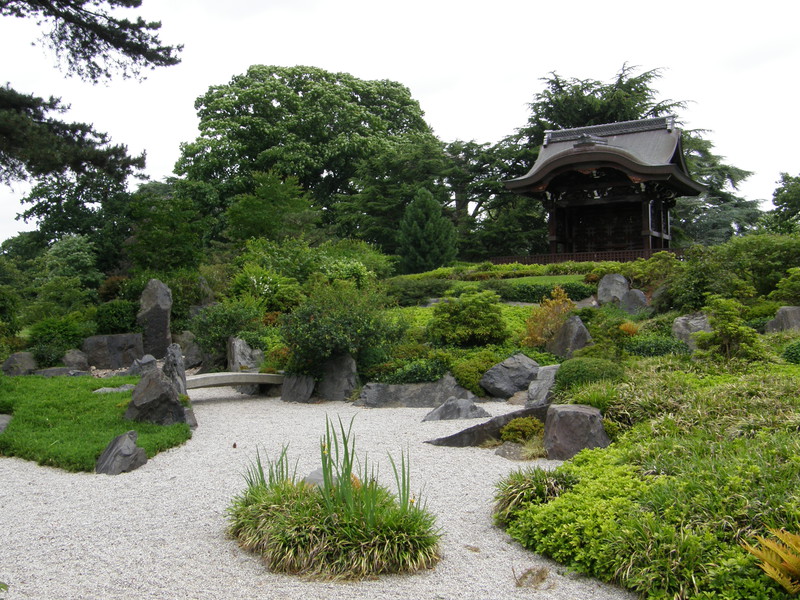
The only problem with this tubewalk is that I've already walked most of it at least once, and some of it I've walked more times than I care to remember. This doesn't make it any less wonderful as a walk – and wonderful it most certainly is – but it does slightly lessen the excitement when you know exactly what's round the next corner.
Three years of living in Chiswick and three years (and counting) in Ealing make this as close to my manor as anywhere on the Tube, and the only section I don't already know well is the short hop from Acton Town and Ealing Common. So forgive me if I sound a little less in awe than I perhaps should be, as this is a beautiful walk through some of the most luscious suburbs in the whole capital, even on the umpteenth time.
Richmond to Kew Gardens
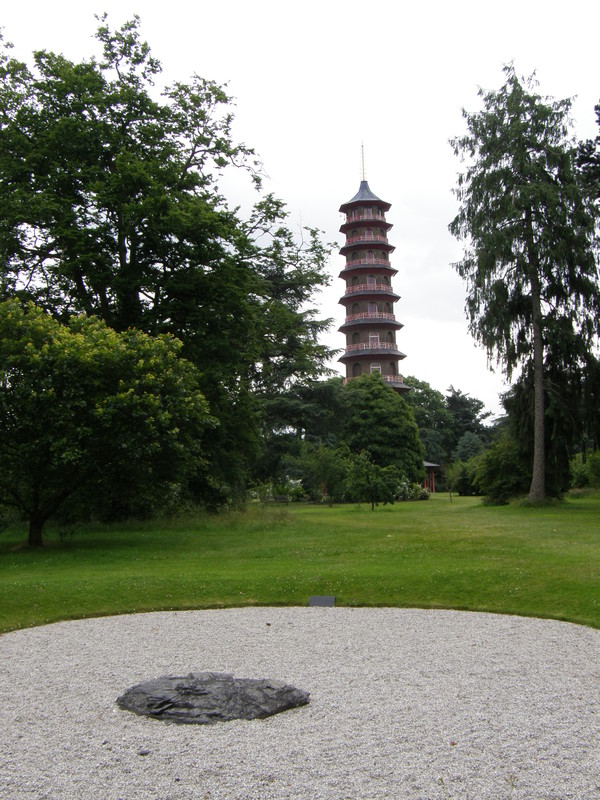
Richmond station is not situated in the most attractive part of town; it's right next to the busy Kew Road, far away from the riverside delights in the south of town. Obviously, the Tube avoids the regular flooding of the Thames and stops well north of the town centre, but this does mean it's a fairly easy escape from the terminus: turn right, head over the roundabout with Mortlake Road, and after a short no-man's land boasting a boarded up tea room and a closed pub (which have been closed for aeons, it seems), the vista opens out on the left with the Old Deer Park, home to the London Welsh Rugby Club.
Peering over the trees on the other side of the sports ground is the pagoda in Kew Gardens. Being at the other end of a short bus ride from Kew, I'm a fully paid-up Friend of Kew, which means I don't have to fork out every time I visit (instead, I fork out once a year via direct debit, which is a lot easier to swallow). If you're doing this section and haven't been to Kew before, then I recommend you ditch the walk and spend a whole day wandering round the gardens, as they are stunning and a walk like this won't do it justice. If, however, you're like me and have already explored every corner of Kew, then popping into the gardens for a short hop makes a bit more sense.
The sights of Kew are really something, particularly early on a Wednesday morning, when you have the gardens almost to yourself (a bit of a shock for those of us more used to visiting at the weekend). As the clock strikes 10.30am, though, parties of schoolchildren erupt out of the woodwork, and the peaceful chirping of the birds is replaced by the overexcited yelping of children getting their first view of the greenhouses for which Kew is so famous. Luckily Kew is huge, so all the screaming, which would be a bit much in a confined space, is rather entertaining, and it's fun to kick back and watch the teachers and parents try, in vain, to control their charges.
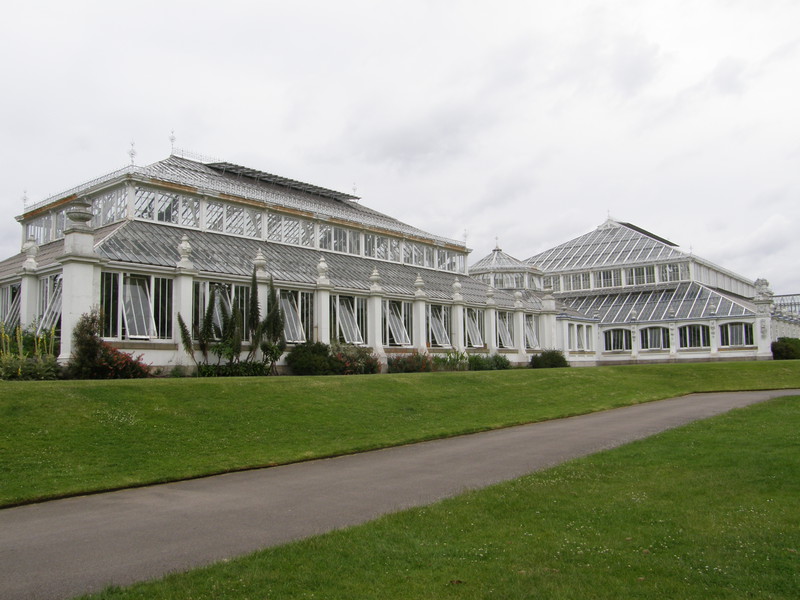
You can see why schools flock here, as it's magnificent. I wandered past the pagoda and the Japanese gateway, before circling the massive Temperate House and following Cherry Tree Walk towards the fluid curves of the Palm House. The rose garden is being replanted and is currently a lawn, but the Palm House Pond is as sculptured as ever, and even for a regular like me, it's hard to leave through Victoria Gate, as there's always so much more to see.
Luckily the suburbs of Kew are delightful, and it's a pleasant stroll to Kew Gardens station through the shops of Kew village. The station is an attractive affair, looking much more like a train station than a Tube station (possibly because it's also on the London Overground). There's a stylish pub right next door, a gated mews along the line to the north, and an atmosphere that screams 'Kew'. If you squint your eyes, you can almost kid yourself that Queen Victoria is still on the throne...
Kew Gardens to Gunnersbury
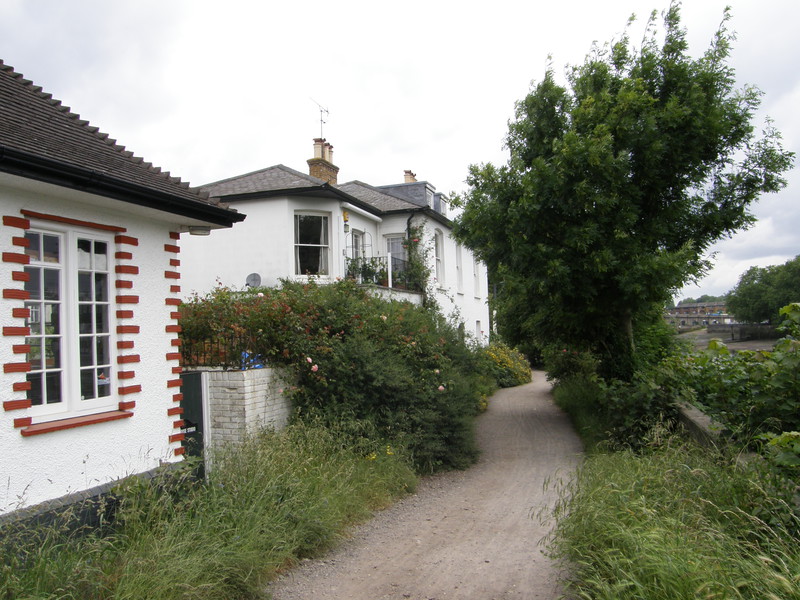
Heading north from the station along Leyborne Road gives you a chance to wallow in the peace and quiet of Kew. OK, planes still chunder overhead on their way to touchdown and there's still a fair amount of traffic around, but by London standards this is a quiet backwater, and it's lovely. The housing doesn't feel so expensive that you feel like a trespasser (as it can in some of the more exclusive parts of Kew, nearer the green), but instead it feels like the kind of place you could possibly afford to live one distant day, given a big dose of luck and a fair career wind. It is a long way from the City, after all, and with just one lifeline – the District line, which crosses Mortlake Road ahead – it's perhaps a little more cut off than the well-connected require... though I'm sure the house prices round here are still jaw-dropping, as it's such a lovely part of the world.
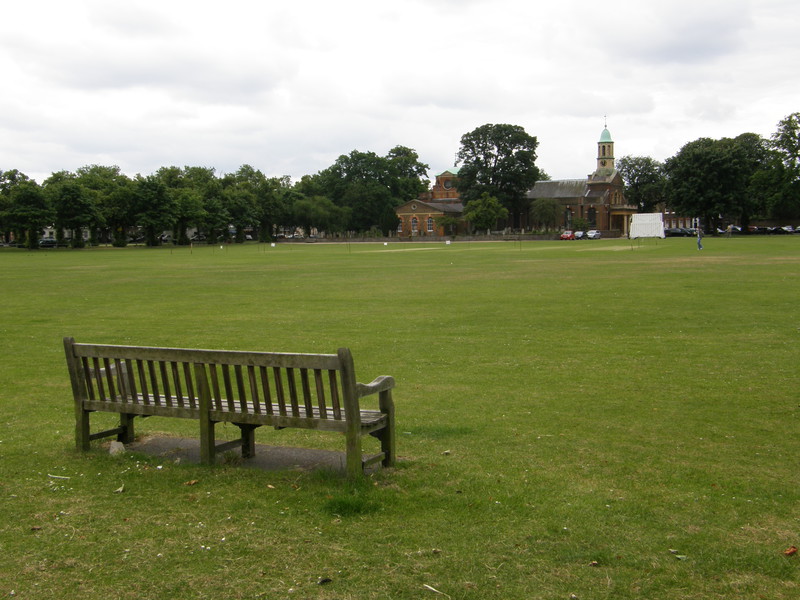
After crossing Mortlake Road, a path follows the Tube line to the Thames, passing the concrete monster that is the Public Records Office. I don't know whether it was designed to look like something out of Nineteen-eighty-four, but it succeeds admirably; the windows are tiny and peep out of the harsh concrete exterior like archers' slits in a modernist castle, and they give the impression that the occupants can survey their surroundings without being spotted by nosey twerps like me. It's a strange beast to find in Kew, and it's a bit of a relief to get to the Thames.
The cottages along the river are to die for, and all the way to Willow Cottages – where there's a path that takes you along the front of the houses – you pass houses that almost make it seem worth the risk of living right next to a river. This is a lovely part of Kew, and a short walk takes you to Kew Green, where summer afternoons see the locals playing cricket on the green while the pubs fill the tourists with ale and a Victorian ideal of Englishness leaves one with a strange sense of longing. The impressive St Anne's Church dominates the western half of the green, while old buildings like the herbarium and library line the edges. It's a dreamy little place, this, even on a dull Wednesday morning.
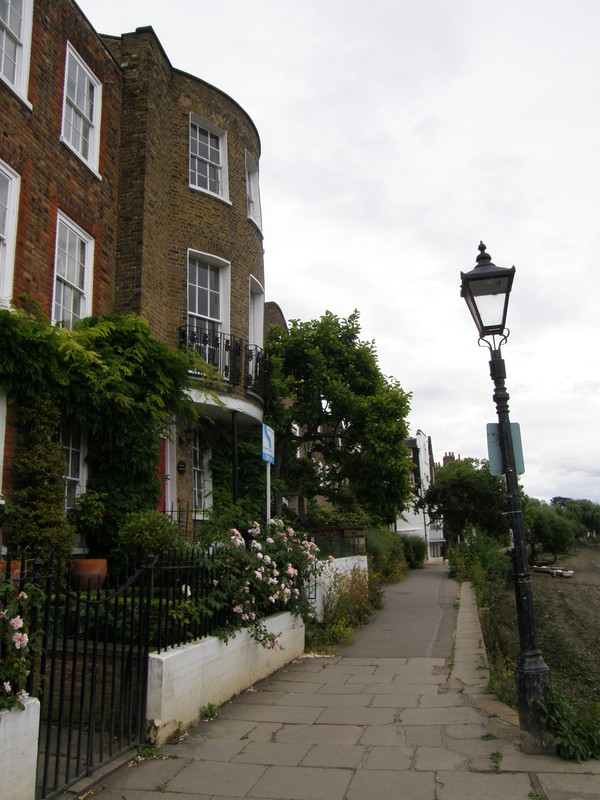
Over Kew Bridge you come to the delicious riverside buildings of Strand-on-the-Green. It's worth strolling along the riverside for a while, as the houses beyond the Bell and Crown pub are distinctly photogenic, and the Bell and Crown itself is a good stop for a bit of refreshment, if it's not too early. This is a good place to get the feeling of the Thames tide, as at very high tide the walkway in front of the pub floods, but at low tide the Thames turns into mud-flats with little more than a trickle of water in the main channel. It's a sobering thought, particularly in this age of melting ice caps and dire predictions.
From the Thames it's a short stroll through the delightful Chiswick Village private estate to Gunnersbury station, which lives beneath the hard-to-miss British Standards Institute building. The station is hard to spot unless you already know it's there; the back entrance is hidden away down a couple of alleyways, and the main entrance on Chiswick High Road seems to be devoid of all signs until you're actually inside. It's all the stranger, as like the other Richmond line stops, Gunnersbury is on the London Overground, so this is no backwater stop: trains go all the way to Stratford from here, all the way on the other side of the city.
Gunnersbury to Turnham Green
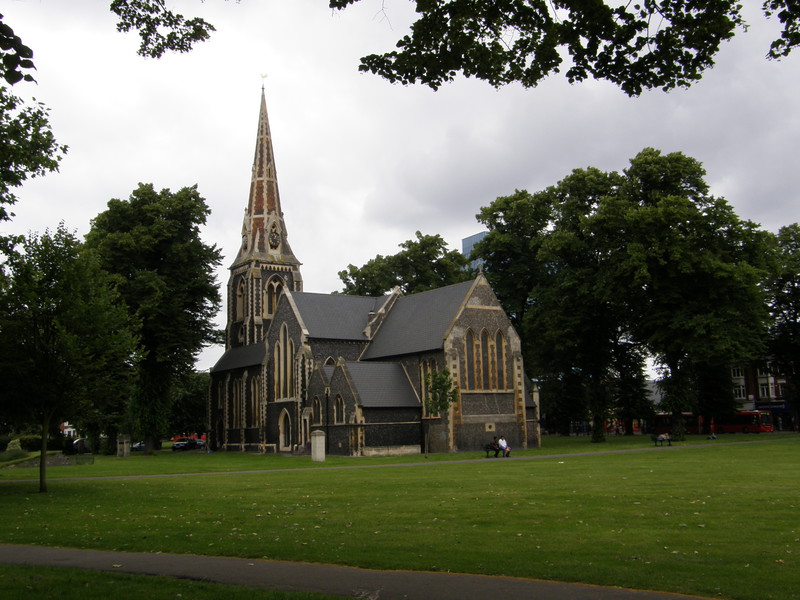
I'm a bit biased towards Chiswick, as I spent three very happy years here sharing a flat with some delightful friends while having more fun than was strictly sensible. The feeling of walking from Gunnersbury station to Turnham Green and past my old doctor, my old dentist and my old flat... well, it's heady stuff, is nostalgia. But then Chiswick is a lovely place, even if it's a little too cappuccino belt for some, and even though Chiswick High Road is a busy place with a good range of shops and more pubs, restaurants and coffee joints than you can shake an au pair's allowance at, I still like the place. It even has its own local record label just off the green – Independiente – who can boast Travis, Embrace and Martina Topley Bird on their books, and it's not every Nappy Valley suburb that can boast that.
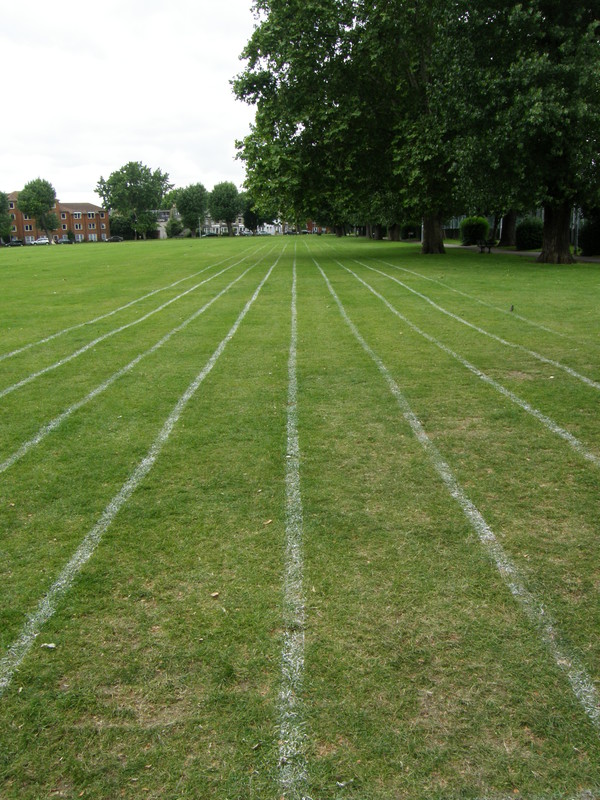
It's a pleasant walk along a back alley called Linden Passage, past the huge tower of the Catholic church and back to the High Road. I had originally thought that it was round here that the first V2 flying bomb landed on London in World War II, but you can't believe everything you research on the Web, and it turns out that the bomb actually landed opposite 5 Staveley Road, some way south of here. So, scrubbing that particular point of interest from my itinerary after a bit of fruitless searching for the commemorative plaque, I headed back for the High Road I turned past the Balans restaurant and into Chiswick Common. The park is bordered by the Tube line to the north, where District and Piccadilly trains rush east to the city and west to Heathrow, Uxbridge, Richmond and Ealing.
It isn't far to Turnham Green station, a confusing name as Turnham Green is some distance away (indeed, Turnham Green itself is nearer to Chiswick Park station, our next destination). Buried into the eastern half of the bridge over Turnham Green Terrace, the station entrance is a modest affair, home to a flower seller and next door to an attractive pub. I'll be back here tomorrow, to start the long journey east towards Upminster.
Turnham Green to Chiswick Park
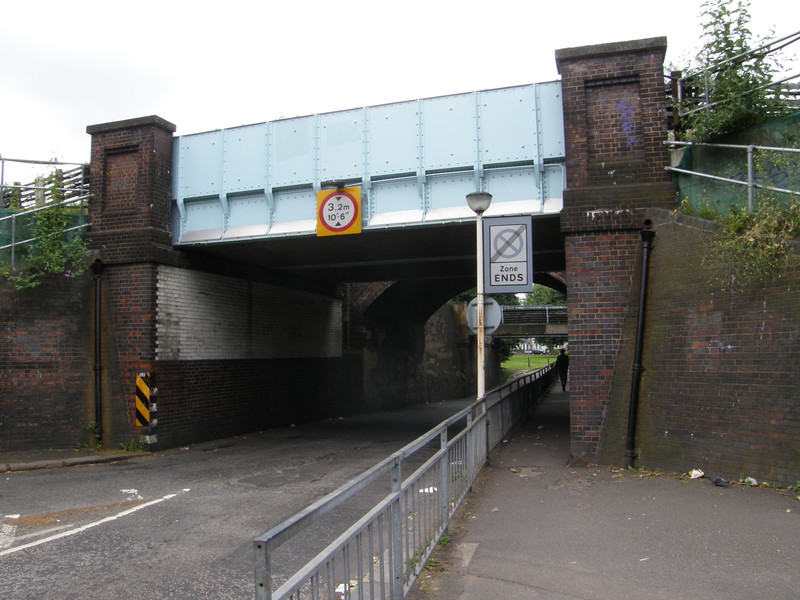
It's all greenery from Turnham Green to Chiswick Park, as the whole stretch crosses Acton Green Common. This time the Tube rumbles away to the south, and this long, thin stretch of enjoyable parkland is split in two by Fisher's Lane, which ducks under the Tube via not one, not two, but three bridges. In the centre is the original bridge, which would have carried the original 1879 line, but now it carries the westbound Piccadilly service and the District line to Ealing. On the northern side of the original arched brick bridge is a sturdy iron bridge that carries the same services heading east, while the iron bridge to the south carries the District line to and from Richmond, peeling off to the south just west of Chiswick Park station.
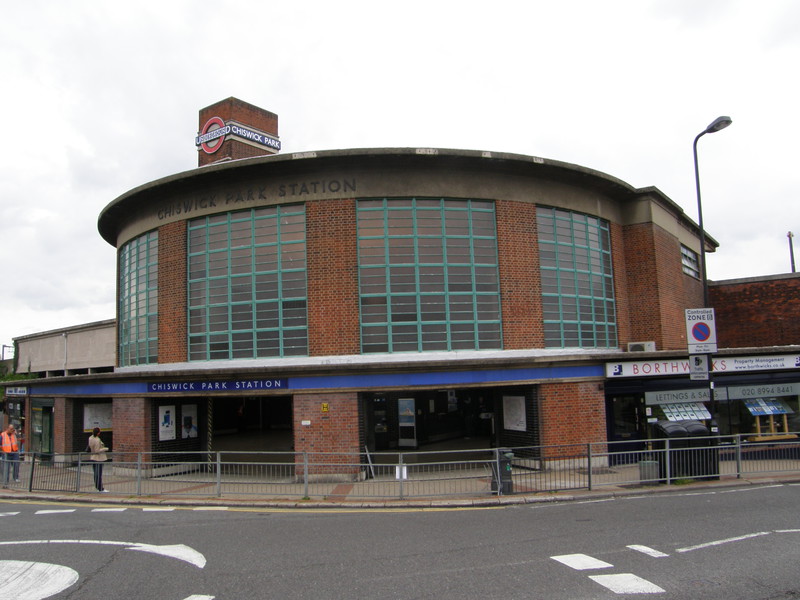
At the end of the green, just past the church, there are some lovely little cottages along Hardwicke Road, but the best is left for last, as Chiswick Park station is a corker. The original station opened on as part of what was then called the Metropolitan District Railway (now the District line), but between 1931 and 1932 it was rebuilt to a design by Charles Holden, the most significant station architect of them all. The station is dominated by its tall, semi-circular ticket hall, with large panels of clerestory windows that let light into the structure. Inside, the ticket hall is light and airy, a surprise for such a solid structure, and the icing on the cake is a huge brick tower, emblazoned with the London Underground roundel and the station name, which was built to make the station visible from Chiswick High Road. This is my favourite Holden station so far, and it makes the likes of Rayners Lane look positively industrial (though given Rayners Lane station's position on its busily eponymous road, its industrial appearance is well placed). Perhaps it's the round design that makes the difference, but whatever it is, I love it.
Chiswick Park to Acton Town
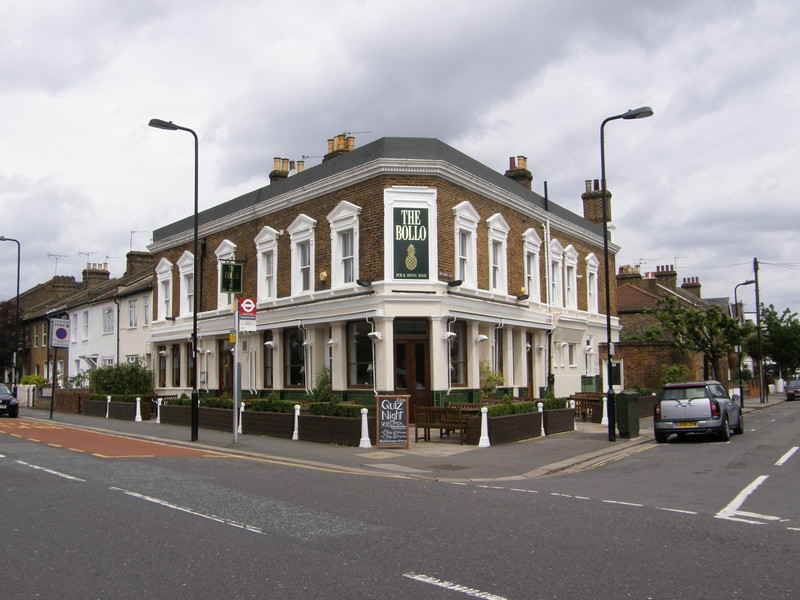
There isn't a great deal to report about the walk to Acton Town along Bollo Lane, except for students of sociology, who might enjoy the way in which Chiswick bluntly morphs into Acton at the London Overground level crossing about halfway between the two. The Chiswick end starts with the Gunnersbury Triangle, a cute little nature reserve that's tucked away off the road, and then it's all lovely Victorian terraces, with The Bollo proving an excellent place if quality gastro-pubs are your thing. The enjoyable suburbs continue all the way to the railway line, and then bang! You're into Acton, and it's all industrial estates and council housing.
However, there is one interesting point to note. As you cross the London Overground, look to your right, and you can see South Acton railway station along the track. It might not seem like much, but Acton is the only place in the whole UK to have stations at all four points of the compass, not to mention the middle. North Acton, West Acton and East Acton are all on the Central line, South Acton is (as mentioned) on the London Overground, and for good measure there's also Acton Central (on the Overground) and Acton Town (on the District and Piccadilly lines).
Like Chiswick Park, Acton Town station was also rebuilt between 1931 and 1932 to a design by Charles Holden, but it's a rectangular affair and as such doesn't quite do it for me. Then again, it's stuck on a busy road junction that white vans make their own, so perhaps it's an unfair competition, as Chiswick Park is in a much quieter part of town.
Acton Town to Ealing Common
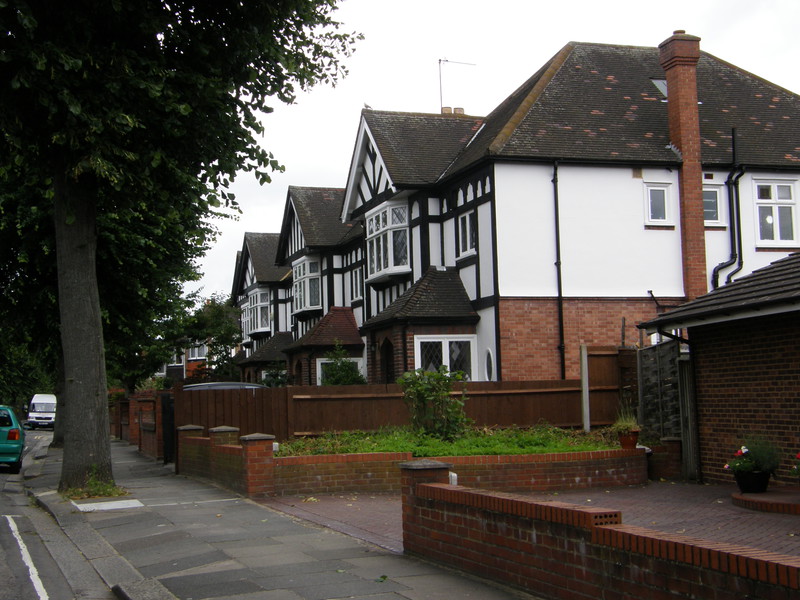
It's all backstreets to Ealing Common, and the industrial estates of Acton don't make it here. Instead, this is the Kingdom of Mock Tudor, with entire rows of houses flying the black and white flag. The other side of the Tube line is home to the London Transport Museum Depot at Acton, where vintage trains are stored, and just north of that is the large Ealing Common Tube Depot, but you'd never know, because Carbery Avenue and Tring Avenue are such peaceful spots.
So it's tree-lined suburbs and clean streets all the way to Ealing Common station, which sits on the rumbling Uxbridge Road. Again rebuilt by Charles Holden, this time in 1930 to 1931, the design is constructed in Portland stone and features a tall seven-sided ticket hall with glazed screens on all sides, some of them featuring the outline of the Underground roundel in blue outline. I'm told the design is very similar to the one at Hounslow West; I'll no doubt find out when I do the Piccadilly line.
Oh, and for all you fast food fans, the Nando's next to Ealing Common was the first to be opened in the UK, flinging its doors open in . It's a modest place to start a peri-peri chicken revolution, and the restaurant is pretty small compared to its younger brothers in town, but it all started right here...
Ealing Common to Ealing Broadway
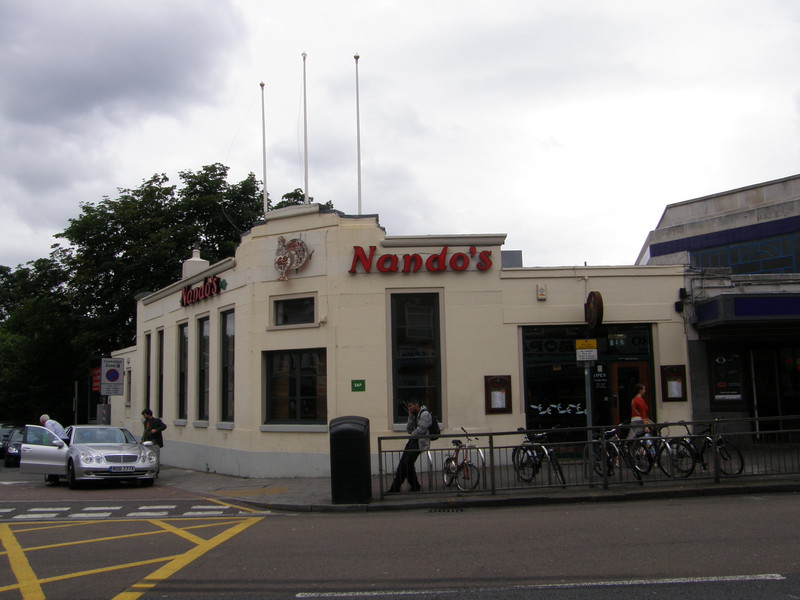
This final leg is very much a personal trek through Ealing and you might wonder what all the fuss is about, but I have to say, I am fond of where I live. Peta and I moved to Ealing from Balham three years ago, intending to rent for six months while we found somewhere to buy, but we ended up renting such a pretty little workman's cottage – complete with a real fire, a garden, jasmine climbing over the front door and a white picket fence – that we never got round to it... and now that the market is gently collapsing and we're still here, enjoying our lack of mortgage in the quiet 'burbs of Ealing.
It's a pleasant place, is Ealing, though casual visitors to Ealing Broadway won't necessarily come away with that impression, as the town centre is fairly functional and the shopping centre is crowded even on weekdays. From Ealing Common station, then, it's best to skirt around the centre, and it's a short stroll to Ealing Common, which it has to be said isn't the most exciting green space in London, but it does have the advantage of being large and relatively wild (the grass is left to grow long in certain areas, which gives it a meadow-like vibe on sunny days). At the western edge of the green is a great little pub, The Grange, which serves a good pint and excellent food, albeit at prices that are best swallowed whole.
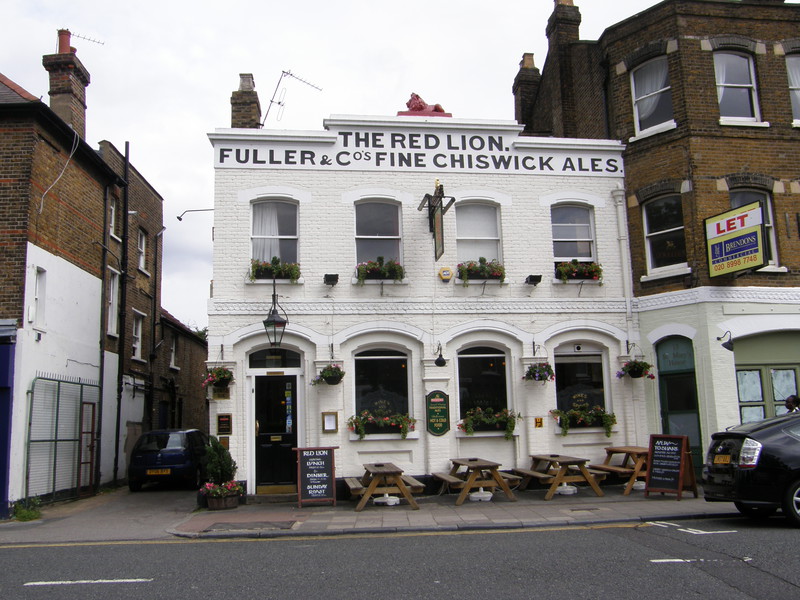
From the pub, Warwick Road takes you to the main road south out of Ealing, and it does it in some style. This is lovely suburbia, with large detached houses, some of them smothered in wisteria, and others hiding behind manicured hedges. The delights continue for about ten minutes until you pass the Ealing Campus of Thames Valley University on your right (originally founded in 1860 as the Lady Byron School, according to the blue plaque by the university entrance), and you come out opposite the earthier and more affordable Castle Inn on St Mary's Road.
Turn right up here and you'll come across what is arguably the best pub in Ealing, the Red Lion. Sitting opposite Ealing Studios, it's known to its regulars as Stage Six (the film studio equivalent of the 19th hole). The walls are smothered with photos of Ealing stars and the beer is excellent; grab some before you head up to the Broadway, because it's much harder to find anything palatable up there.
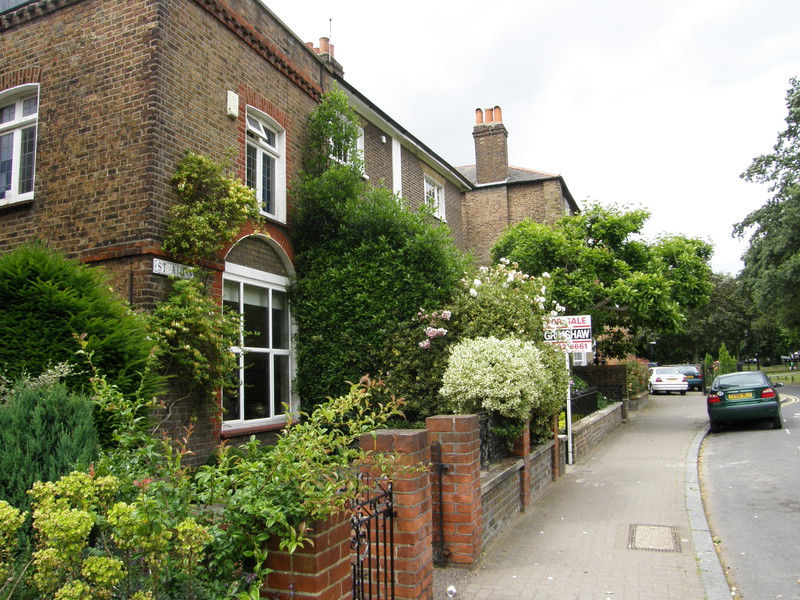
Ealing Studios itself is not that much to look at, as all the magic happens behind closed doors, but it's still an emotive name, being officially the oldest film studio in the world. It's possible to spot the studios themselves from a little further up the road, behind a new set of offices which also sport the Ealing Studios logo.
From the studios the road passes Pitzhanger Manor, behind which is pleasant Walpole Park, and then it's a short hoof through the shoppers along the Broadway to Ealing Broadway station, which sits under a white office block in a pretty nondescript manner. This whole area is earmarked for redevelopment, though there is much debate over what form that redevelopment will take. Nobody is denying that central Ealing could do with a polish, however, and if Crossrail gets the go-ahead, Ealing Broadway will be only six stops from Liverpool Street, making is even more of a des res that it already is. Perhaps we should have bought a house after all...